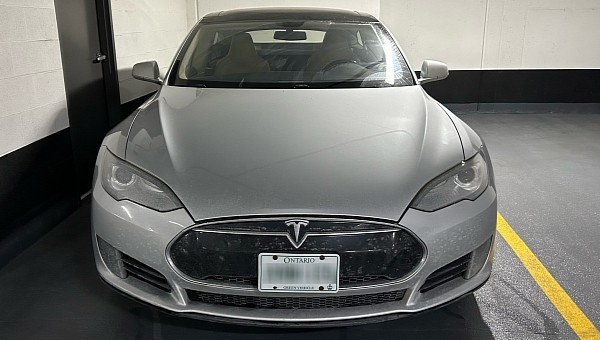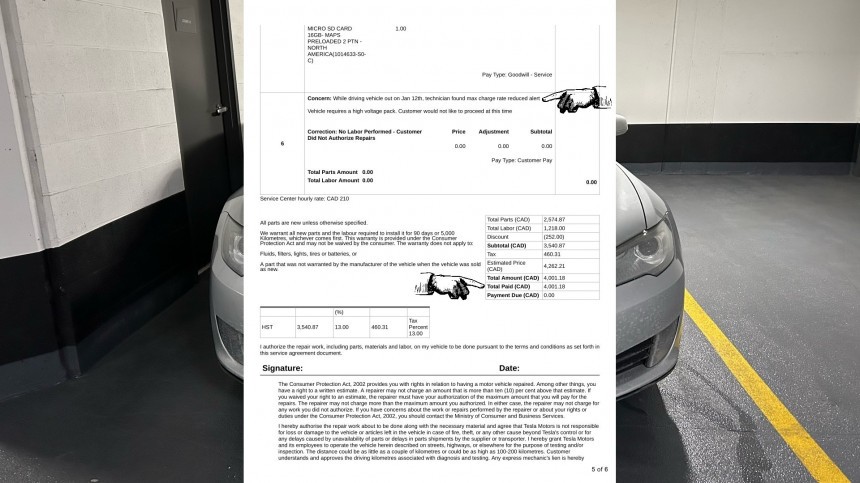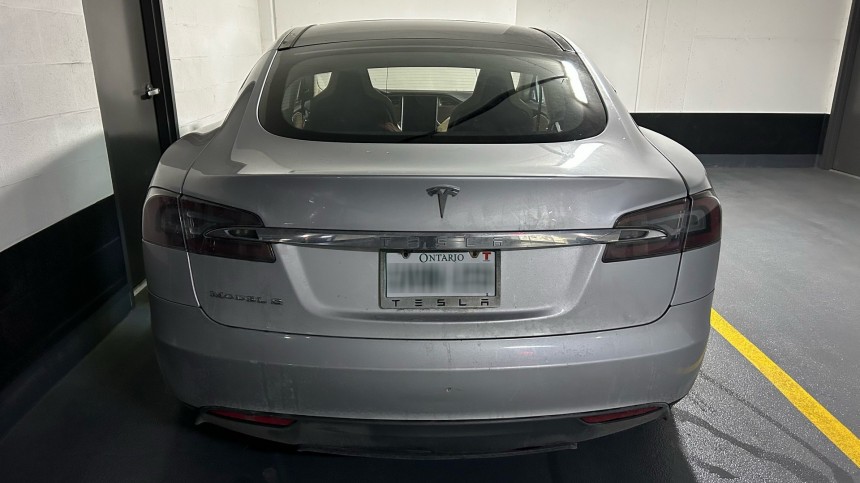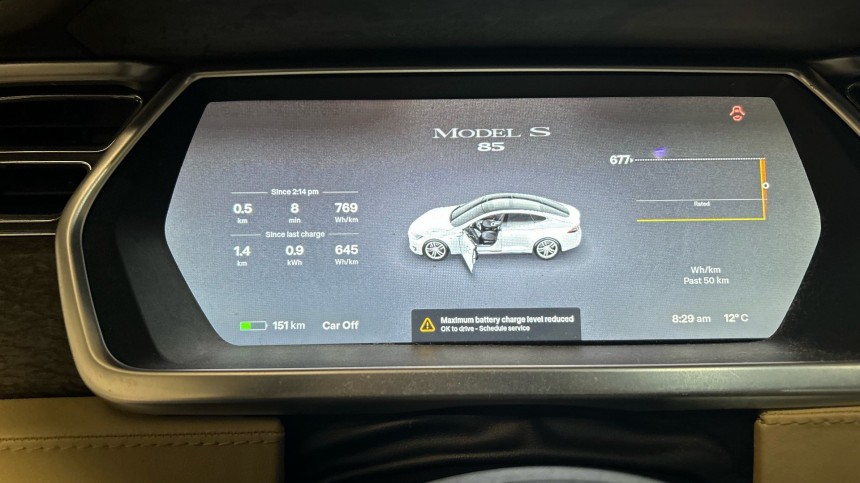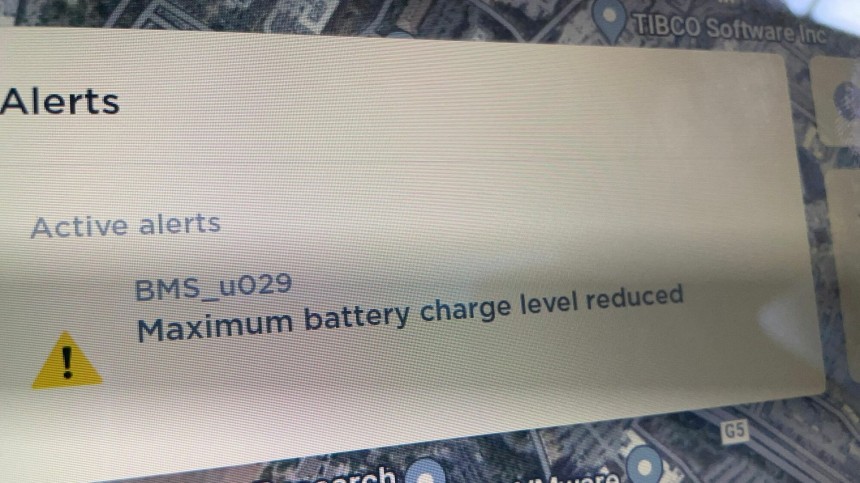I have been warning about battery pack prices and how difficult it will be for battery-electric cars to age, for quite some time. Their main component is so expensive that its failure will render the vehicle useless – even if everything else in it is still ok. ST (John) experienced that in the worst way possible: losing almost all the money he spent on a used 2013 Tesla Model S Performance. He had a reckoning that may help other customers, EV advocates, and carmakers.
If you are not aware of the story, John had just bought his Model S when he took it to a Tesla Service Center. He had to fix some stuff and obtain the safety certificate that would allow him to register the car as his property. Tesla performed the MCUv1 recall in his vehicle and an update that made the BMS_u029 error emerge. This code tells the owners they will have to replace their battery packs, which costs around $20,000. That broke one of ST’s strongest beliefs when it comes to owning a vehicle.
“If you are in a position where you need to buy a car, buying a used electric vehicle is one of the most environmentally-friendly ways to approach vehicle ownership. Preserving products that have already had the energy expenditure into manufacturing them is way more sustainable than building new cars and throwing away the old ones after 200,000 kilometers (124,274 miles). I’m worried that Tesla’s attitude towards their vehicles is going to lead to absurd amounts of e-waste in the future.”
Just think about it: John spent CAD18,000 ($13,497 at the current exchange rate) on his Tesla Model S, CAD4,000 ($2,999) to repair it, and had to sell it for CAD8,000 ($5,998), which made him lose CAD14,000 ($10,498) in a matter of weeks. As far as we know, all because Tesla’s battery management system (BMS) does not perform the regular tests it should. In ST’s case, it only did that after replacing the MCUv1, which detected the BMS_u029 error. Theoretically, the car could have had this issue for ages, even before it lost its eight-year warranty.
“In my situation, I was financially able to purchase a brand-new vehicle but have always purchased used – you don’t pay out the depreciation in the early years of the vehicle, and it’s less wasteful. After this experience, I’m actually more focused on trying to tailor my life around not needing a car at all, as that will minimize my carbon footprint the most.”
For ST, that forced him to warn anyone willing to buy a used Tesla not to do it, especially if the battery pack is no longer under warranty, which is damaging to the mission Tesla said it had: to make electric cars mainstream.
“The thing is, people have to buy used Teslas, or else it will paint the stigma that electric cars are wasteful or have poor depreciation curves, which will ultimately hurt the environment and the promise that EVs are supposed to bring to the table. Unfortunately, I cannot recommend it to anyone until Tesla addresses these issues. The used market is not going to tailor to vehicles which require tens of thousands of dollars in repairs after just 200,000 km.”
John is also not happy about how Tesla treats the defective battery pack as if it belonged to the company. Donald Bone faced the same problem when the company said he would need to replace the battery pack in his Model 3 just because of a broken coolant nipple. Luckily, he fixed the issue with the Electrified Garage for $700. Tesla would charge him $16,000 and pay him nothing to keep the old battery pack.
“The other part that has frustrated me about this experience is that Tesla is not paying you for your old battery pack, which you give in when the car’s battery is replaced. That pack can be remanufactured and resold for another $20,000. I feel like the customer should have a discount based on that.”
That would be more than fair, especially considering that recycling old battery packs will be a way to obtain raw materials to build new lithium-ion cells. Volkswagen is trying to keep ownership of these precious resources by leasing old EVs. Some companies, such as VinFast, will sell you the vehicle and rent the battery packs, which takes the burden from a failed component from the customers’ backs.
What carmakers in general and Tesla in particular have to find is a solution to keep used EVs running. As the most successful EV maker in the world, Tesla has to ensure its cars are serviceable and long-lasting. If they are meant to be sold only as new vehicles, they will create a more significant problem than current combustion-engined vehicles when it comes to resource waste and generating junkyard material. Instead of promoting clean mobility, the company may actually hurt it. What happens when these Tesla owners have to sell their EVs to buy a new one, and no one wants the used EVs? There is nothing environmentally correct about that.
“If you are in a position where you need to buy a car, buying a used electric vehicle is one of the most environmentally-friendly ways to approach vehicle ownership. Preserving products that have already had the energy expenditure into manufacturing them is way more sustainable than building new cars and throwing away the old ones after 200,000 kilometers (124,274 miles). I’m worried that Tesla’s attitude towards their vehicles is going to lead to absurd amounts of e-waste in the future.”
“In my situation, I was financially able to purchase a brand-new vehicle but have always purchased used – you don’t pay out the depreciation in the early years of the vehicle, and it’s less wasteful. After this experience, I’m actually more focused on trying to tailor my life around not needing a car at all, as that will minimize my carbon footprint the most.”
“The thing is, people have to buy used Teslas, or else it will paint the stigma that electric cars are wasteful or have poor depreciation curves, which will ultimately hurt the environment and the promise that EVs are supposed to bring to the table. Unfortunately, I cannot recommend it to anyone until Tesla addresses these issues. The used market is not going to tailor to vehicles which require tens of thousands of dollars in repairs after just 200,000 km.”
“The other part that has frustrated me about this experience is that Tesla is not paying you for your old battery pack, which you give in when the car’s battery is replaced. That pack can be remanufactured and resold for another $20,000. I feel like the customer should have a discount based on that.”
What carmakers in general and Tesla in particular have to find is a solution to keep used EVs running. As the most successful EV maker in the world, Tesla has to ensure its cars are serviceable and long-lasting. If they are meant to be sold only as new vehicles, they will create a more significant problem than current combustion-engined vehicles when it comes to resource waste and generating junkyard material. Instead of promoting clean mobility, the company may actually hurt it. What happens when these Tesla owners have to sell their EVs to buy a new one, and no one wants the used EVs? There is nothing environmentally correct about that.
